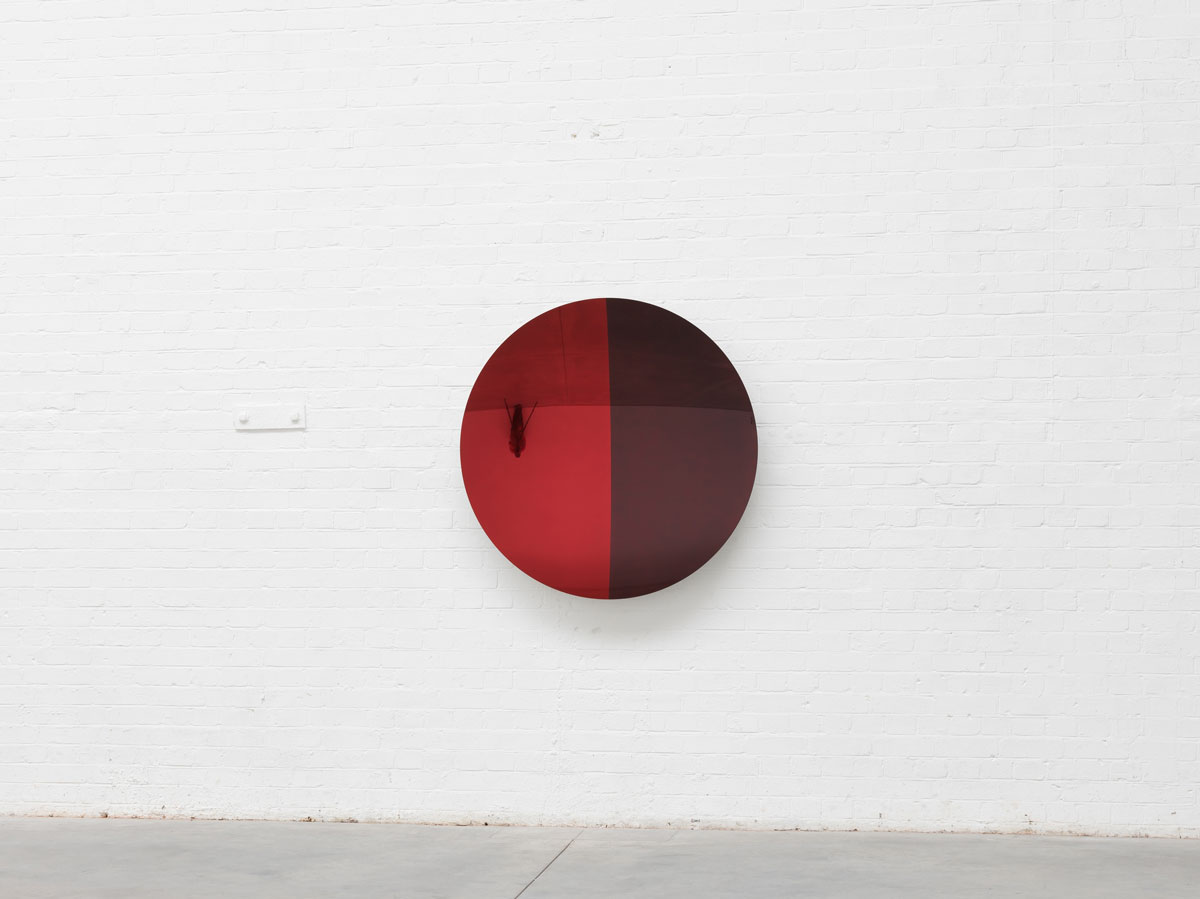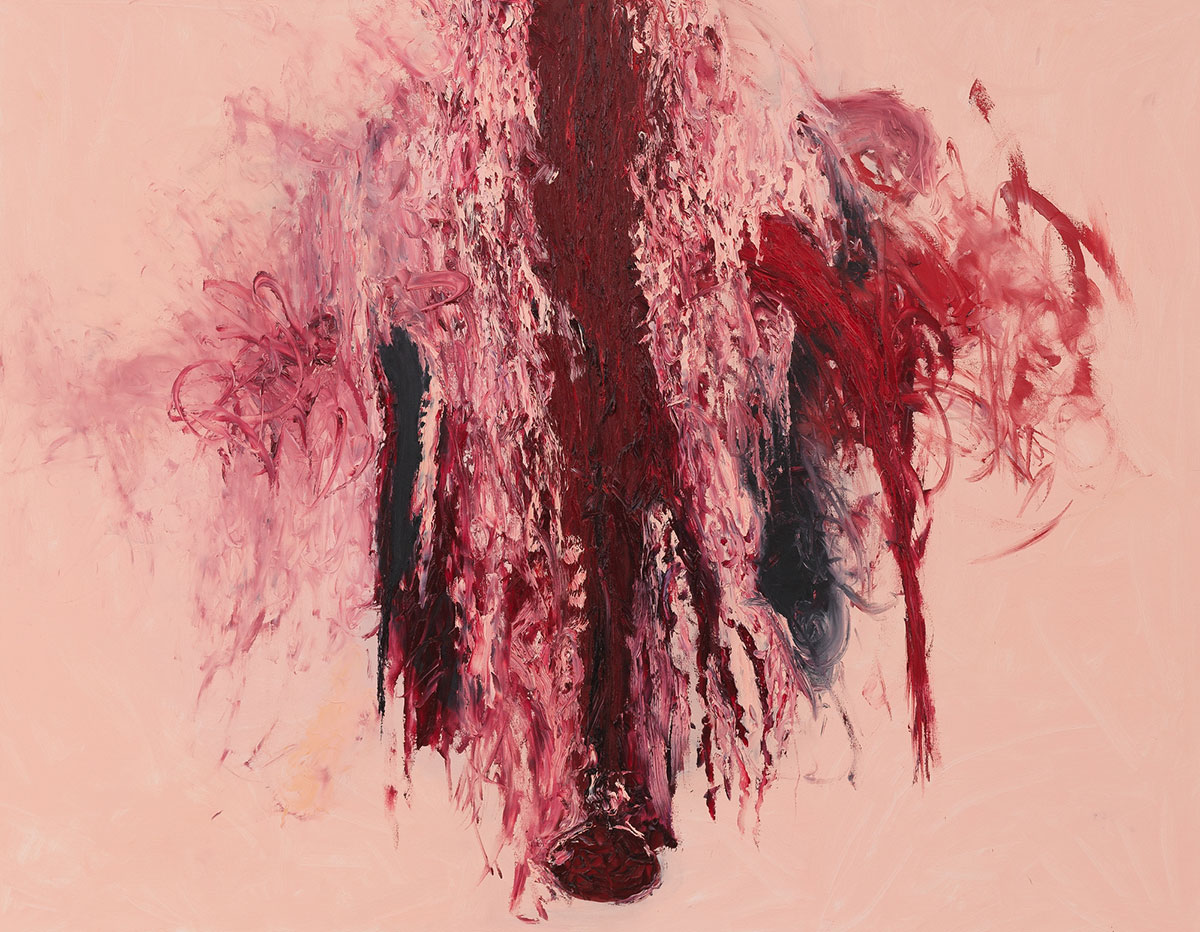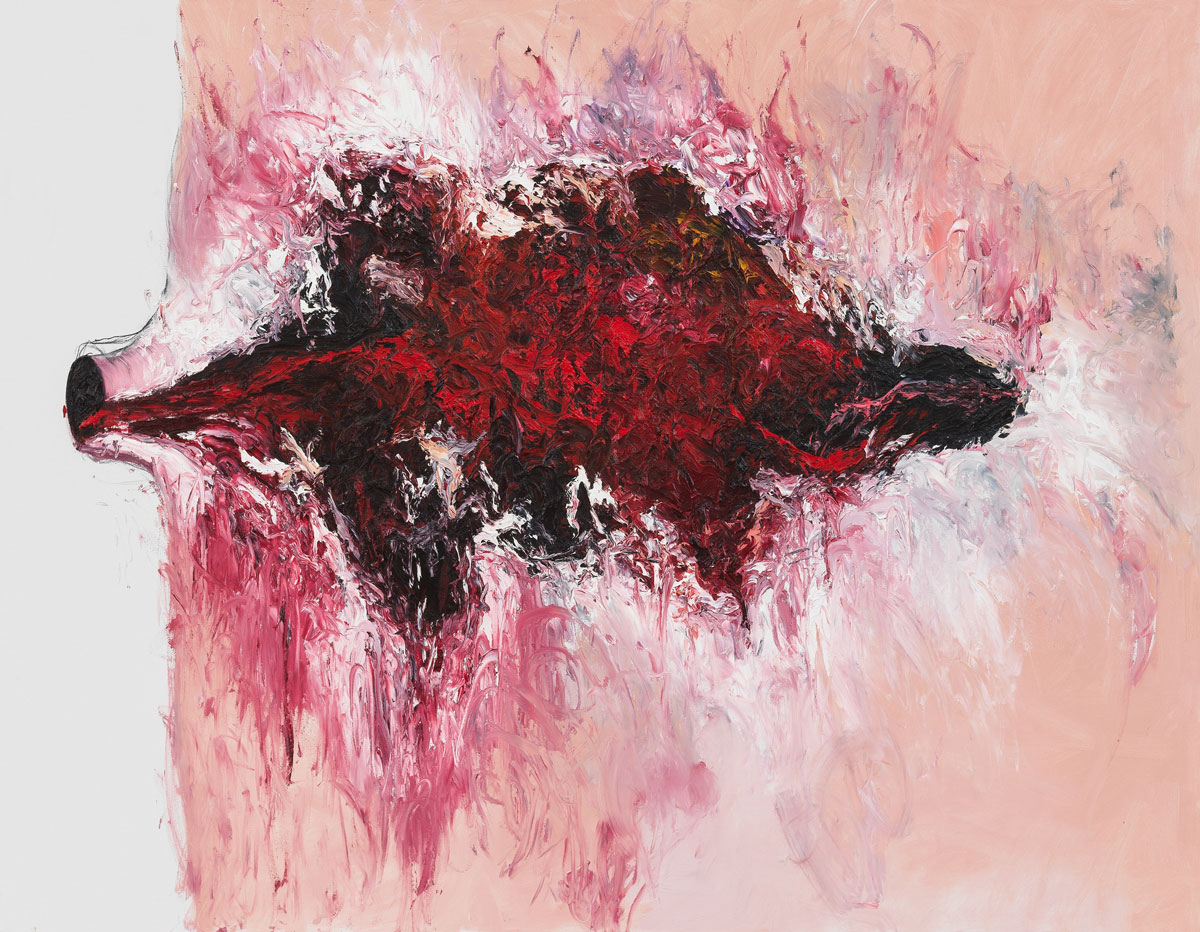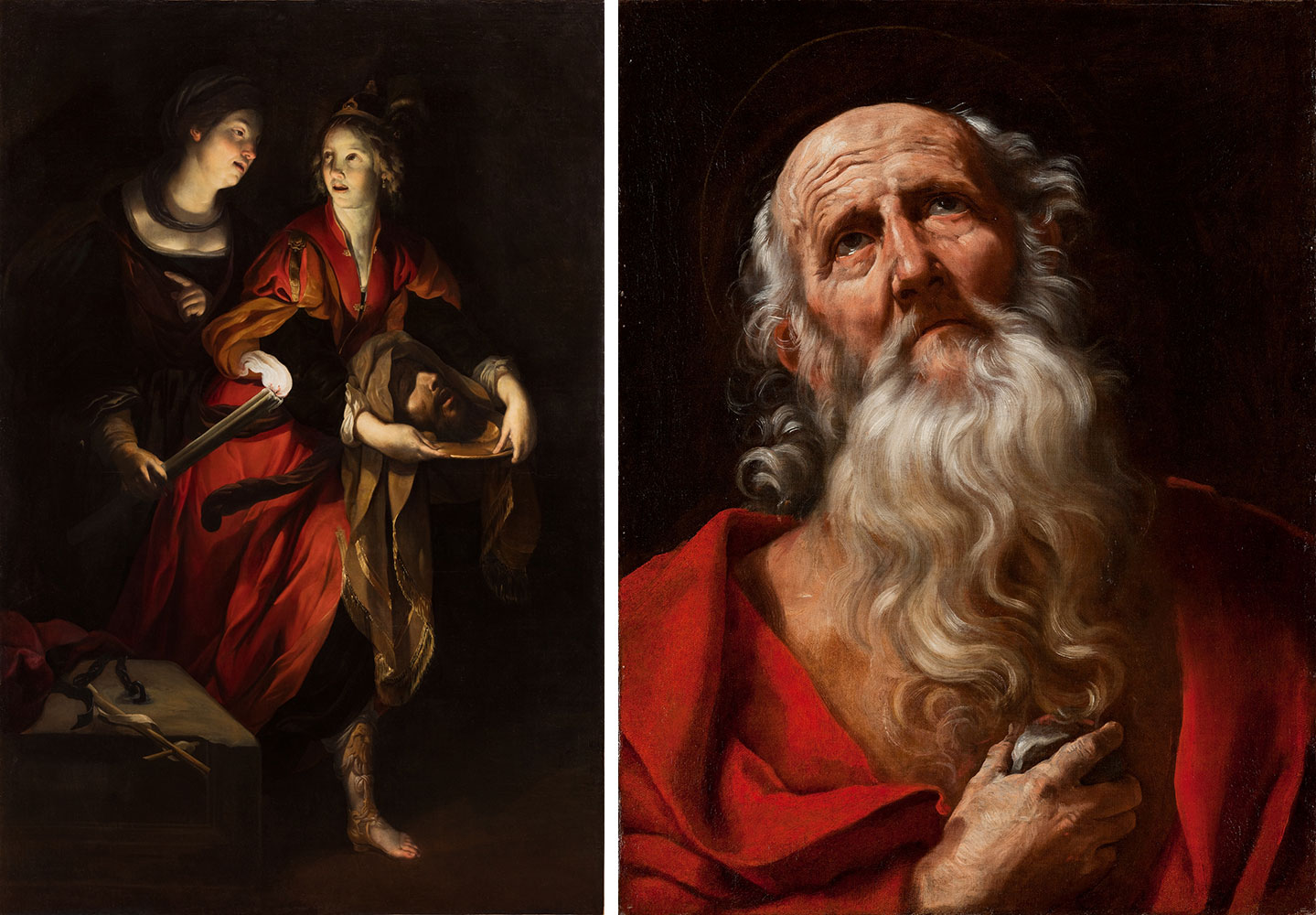PRESENTATION: The Benighted From Anish Kapoor to Guido Reni
 For the entire length of his career, this Anish Kapoor has been fascinated with the notions of shape and void, perspective, light and the absence thereof. Kapoor, who works across numerous scales with diverse materials such as mirror, stone, wax or PVC, relentlessly explores geometric and biomorphic shapes while demonstrating a singular interest in negative space. “That’s what I am interested in: the void, the moment when this is not a hole, it is a space full of what isn’t there”.
For the entire length of his career, this Anish Kapoor has been fascinated with the notions of shape and void, perspective, light and the absence thereof. Kapoor, who works across numerous scales with diverse materials such as mirror, stone, wax or PVC, relentlessly explores geometric and biomorphic shapes while demonstrating a singular interest in negative space. “That’s what I am interested in: the void, the moment when this is not a hole, it is a space full of what isn’t there”.
By Efi Michalarou
Photo: Galleria Continua & Galerie Canesso Archive
While confronting 15th, 16th and 17th Century art with Anish Kapoor’s works is a bold choice, in the exhibition “The Benighted From Anish Kapoor to Guido Reni” that is a collaboration between Galerie Canesso with Galleria Continua, it is well-justified in many respects. Kapoor’s art explores the very idea of the sublime in its dynamic and sensorial relationship with the viewer. Colour, light and perspective, whose rules were defined by Renaissance artists, all constitute elements that are essential to the poetry of his work. At the very heart of the dialog between the art works presented here is the color red, the true cohesive thread of this exhibition. In societies of times past, red was a primal color, that which preceded all the others, conjuring up fire and blood, sacrifices, life and death, love, the inside of the human body. The juxtaposition of the works in the exhibition, which are otherwise separated by centuries, brings about numerous, polysemantic echoes: this starts with light and reflections “Portrait of a Soldier” by Mattia Preti/”Laser Red to Garnet” by Kapoor (2018), transcendence and the power of religious depictions (“Saint Jerome: by Guido and “blood and carnality (Lucretia)” by Francesco Cifrondi and Anish Kapoor’s four works on canvas or paper (2022 and 2021). Blood is also a true mark of violence and death in “Crucifixion” by a forerunner of the Master of Torralba, circa 1420 and Francesco Rustici’s “Salome with the Head of Saint John the Baptist”. In Anish Kapoor’s art, red expresses the exploration of the body’s interiority, showing what is usually hidden underneath the skin (as epitomized by the title of one of his paintings, Skin) and what dwells within us. This ensemble of works explores the beauty and the expressive power of this color through the centuries. “Laser Red to Garnet” constitutes a prime example of Anish Kapoor’s classic series of concave mirror works that pulls the viewer into a mesmerizing vortex. The polished stainless steel creates ever-shifting optical illusions as one moves around it. From a distance, it reflects back a distorted and inverted image of its surroundings, which gradually enlarges until it bursts into view, like looking through a magnifying glass. While reflections in the distance continue to be inverted, the viewer’s reflection restores to its regular orientation at this focus point. The captivating audio effects induced by the mirror adds to the unsettling feeling of these shifting viewpoints. A rich multimodal experience is provided by this piece, which precisely captures the dynamic interaction between the phenomenological, perceptual, and psychological facets that characterize the artist’s work. From the iconography of the Old Masters, Anish Kapoor draws a variety of symbols, revisiting the fundamental themes of religious representation. The materiality of his paintings transcribes the artist’s interest in depicting that which is not visible, death behind the sacrifice, interiority and inwardness behind the nativity, what is organic beyond that which takes on a pictorial form. For Anish Kapoor, old masters’ paintings are far more than mere scenic representations, they are acts in action, and this conception of movement is quintessential in his art. He himself describes his works as “painting-acts”, allowing them to appear and reappear, ceaselessly changing, offering something for the viewer to see well beyond the painting itself. Long celebrated for sculptures that exploit material, volume, and color to subvert optical perception, over the past decade painting has become an increasing focus in Kapoor’s practice. These works are informed by the same terms that constitute his sculptural language and driven by his abiding preoccupation with the material and immaterial. Kapoor explains: “To make a work out of pigment is to refer very clearly to the materiality of it: pigment is like earth or clay, stuff that sits on the ground and yet has a kind of weird, wonderful, dreamy quality – it’s what colour does. Or similarly, to hollow out a stone and paint the interior very dark blue, or to do as I am doing in these paintings. It’s the same language”. These paintings animate Kapoor’s longstanding concern with the metaphysical dualities of birth and death, being and nothingness, the transitory and the eternal, the entropic and the sublime – states which convulse together on his canvases, leaving behind the aftermath of what has taken place. Kapoor has encapsulated this sense of temporality in the works – of something that has occurred and may continue to occur – in naming them “painting-acts.” It is within these “painting-acts” that he materializes primordial dramas which seem to precede or altogether eschew rational cognition.
Photo: Anish_Kapoor, Laser Red to Garnet 2018, Sculpture in stainless steel and lacquer, 111 x 111 x 13 cm, Photo: Dave Morgan, © Anish Kapoor. All rights reserved SIAE, 2023 Courtesy of the artist and GALLERIA CONTINUA
Info: Galerie Canesso, 26 rue Laffitte, Paris, Duration: 18/10-20/12/2023, Days & Hours: Mon-Fri 11:00-18:30, www.canesso.art/



Right: Antonio Cifrondi (Clusone, 1656-Brescia, 1730) The suicide of Lucretia, Around 1698-1700, Oil on canvas, 86 x 69 cm, © Canesso Gallery, Paris



Right: Guido Reni (Bologna, 1575-1642), Saint Jerome, Around 1605-1610, Oil on canvas, 65.1 x 50cm, © Canesso Gallery, Paris
